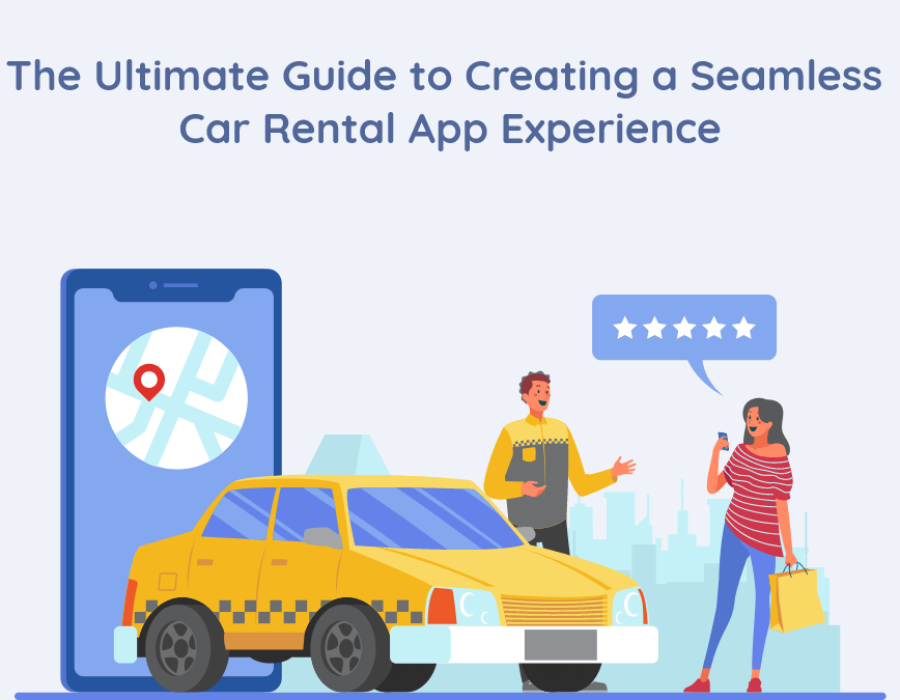In today's fast-paced world, the convenience of a car rental app can make or break a customer’s experience. A seamless app experience ensures users can book vehicles effortlessly, manage rentals efficiently, and enjoy a hassle-free journey. Crafting such an app involves a strategic approach, focusing on user experience, robust features, and reliable technology. This guide will walk you through the essential steps to create a seamless car rental app experience.
1. Understand Your Objectives and Audience
Before diving into app development, it’s crucial to set clear objectives and understand your target audience.
Define Your Objectives
Establish the primary goals of your car rental app. Are you aiming to attract a broad user base, enhance customer loyalty, or streamline operational processes? Clearly defined objectives will guide the app’s design and feature set, ensuring that it meets your business goals and user needs.
Know Your Audience
Conduct thorough market research to identify your target users. Are they business travelers, tourists, or local residents? Understanding your audience’s preferences and pain points will help tailor the app’s features, interface, and functionality to deliver a superior user experience.
2. Plan Core Features
A seamless car rental app must include features that enhance usability and meet user expectations. Here are some essential features to consider:
User Registration and Profiles
Implement a user-friendly registration process that allows users to create and manage profiles. Include features for storing personal details, payment information, and rental history. Ensure robust security measures to protect user data.
Comprehensive Car Listings
Offer detailed car listings with high-quality images, descriptions, and pricing information. Allow users to browse and filter vehicles based on their preferences, such as car type, price range, and availability.
Efficient Booking System
Develop a straightforward booking system that enables users to select pick-up and drop-off locations, dates, and times. The booking process should be intuitive and require minimal steps to complete a reservation.
Real-Time Availability and Updates
Integrate real-time availability to provide accurate information about car status and prevent double bookings. Ensure that users receive timely updates about their reservations, including confirmations and reminders.
Secure Payment Integration
Incorporate secure payment gateways to handle transactions. Support various payment methods, such as credit/debit cards, digital wallets, and bank transfers, to accommodate user preferences.
GPS and Navigation Features
Utilize GPS technology for location tracking, navigation, and managing pick-up and drop-off points. GPS integration enhances user convenience and helps with logistical planning.
User Reviews and Ratings
Allow users to rate and review their rental experience. This feature builds trust, provides valuable feedback, and helps potential users make informed decisions.
Push Notifications
Implement push notifications to keep users informed about booking confirmations, reminders, and special offers. Notifications help maintain user engagement and ensure timely communication.
3. Design a User-Friendly Interface
A seamless app experience relies heavily on an intuitive and aesthetically pleasing design. Focus on the following design principles:
Simplicity and Clarity
Design a clean and straightforward interface that avoids clutter. Ensure that key features are easily accessible and that the navigation is intuitive. A simple design helps users complete tasks quickly and efficiently.
Consistency
Maintain a consistent design throughout the app, using your brand’s colors, fonts, and logos. Consistent branding fosters recognition and builds trust with users.
Responsiveness
Ensure that the app is responsive and performs well across various devices and screen sizes. A seamless experience on both smartphones and tablets is crucial for user satisfaction.
4. Choose the Right Technology Stack
Selecting the appropriate technology stack is essential for building a robust and scalable app. Consider the following:
Frontend Development
Use frameworks like React Native or Flutter for developing a responsive, cross-platform frontend. These frameworks facilitate efficient development and ensure a consistent user experience across devices.
Backend Development
Opt for backend technologies such as Node.js, Django, or Ruby on Rails to manage server-side operations and data handling. Ensure that the backend is secure and scalable to accommodate future growth.
Database Management
Choose a reliable database solution like PostgreSQL, MongoDB, or Firebase to store user data, car listings, and transaction records. A robust database is critical for performance and reliability.
Conclusion
Creating a seamless car rental app experience involves a blend of strategic planning, essential features, intuitive design, and reliable technology. By clearly defining your objectives, understanding your audience, and incorporating user-friendly features, you can develop an app that meets user expectations and stands out in a competitive market. Continuous monitoring and refinement will help ensure that your app remains relevant and delivers exceptional value, ultimately enhancing user satisfaction and driving business success.






Comments